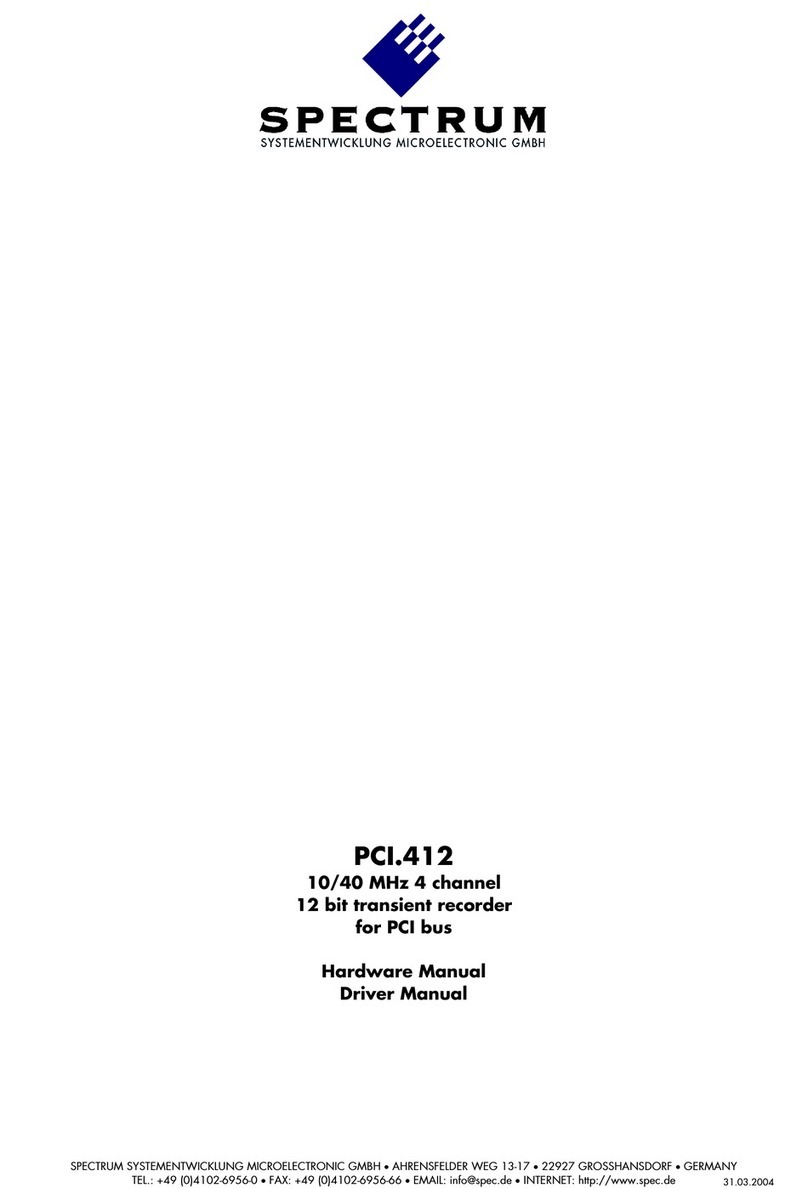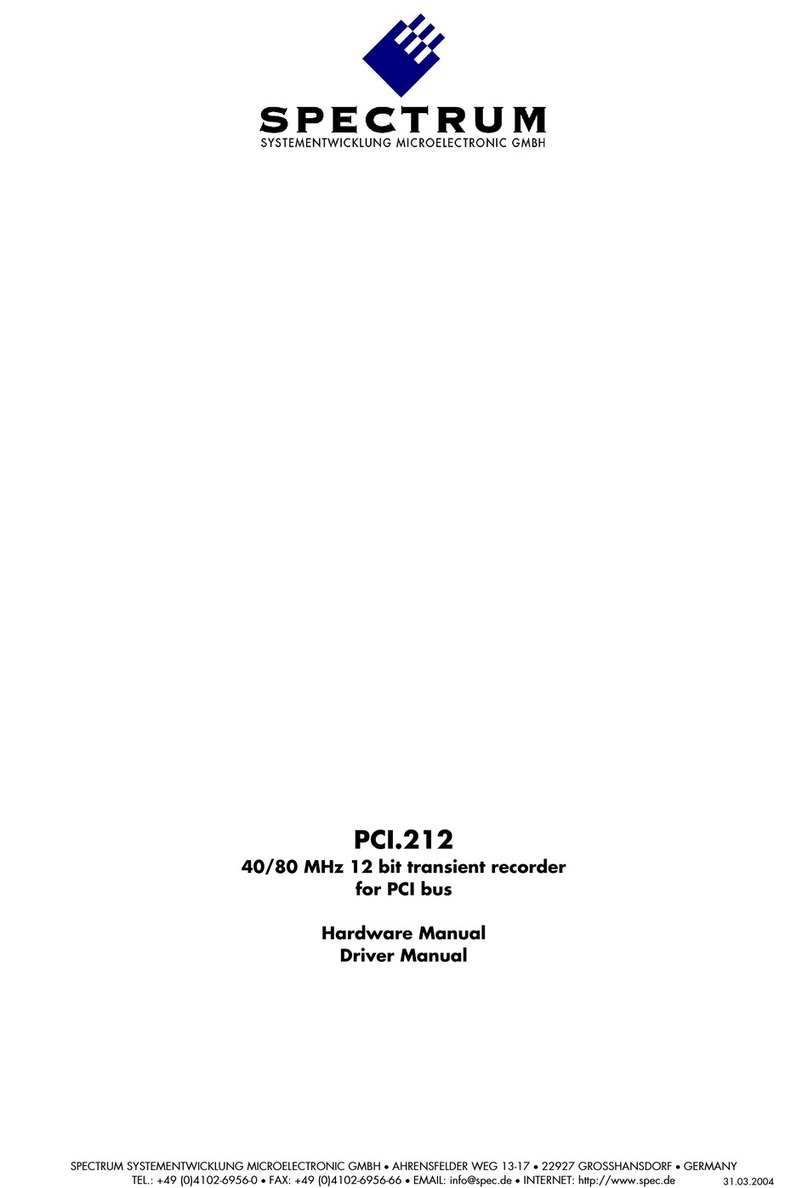Table of Contents
Table of Contents ................................................................................................................................................. 3
Preface ................................................................................................................................................................5
Product Introduction............................................................................................................................................. 6
General Information................................ ................................ ................................ ................................ .......................... 6
Software ................................ ................................ ................................ ................................ ................................ .........6
Additional information ................................ ................................ ................................ ................................ ...................... 6
Order information ................................ ................................ ................................ ................................ ............................ 6
Installation .......................................................................................................................................................... 7
System Requirements ................................ ................................ ................................ ................................ ............................ 7
Hardware Installation ................................ ................................ ................................ ................................ ........................... 7
Driver Installation ................................ ................................ ................................ ................................ ................................ .7
DOS ................................ ................................ ................................ ................................ ................................ .................. 8
Win 98/ME/2000/XP (WDM) ................................ ................................ ................................ ................................ ..............8
Windows 95 (VXD) ................................ ................................ ................................ ................................ .............................. 8
Windows NT (Legacy) ................................ ................................ ................................ ................................ .......................... 9
Windows NT ................................ ................................ ................................ ................................ ................................ ...9
Installation for Linux................................ ................................ ................................ ................................ ............................ 10
Login ................................ ................................ ................................ ................................ ................................ ............ 10
Select the right driver ................................ ................................ ................................ ................................ ...................... 10
Load Driver ................................ ................................ ................................ ................................ ................................ ...10
Major Number................................ ................................ ................................ ................................ ............................... 10
Installing the Device ................................ ................................ ................................ ................................ ........................ 10
End ................................ ................................ ................................ ................................ ................................ ..............10
Info ................................ ................................ ................................ ................................ ................................ ..............11
Utilities ................................ ................................ ................................ ................................ ................................ .............11
SBench 5.x................................ ................................ ................................ ................................ ................................ ....11
DRVCONFG.EXE ................................ ................................ ................................ ................................ ........................... 11
PCITEST.EXE ................................ ................................ ................................ ................................ ................................ ..11
Hardware Description........................................................................................................................................ 12
Trigger Information................................ ................................ ................................ ................................ ............................. 12
Option Gated Sampling ................................ ................................ ................................ ................................ ...................... 12
Option Multiple Recording ................................ ................................ ................................ ................................ .................. 13
Option Synchronisation ................................ ................................ ................................ ................................ ...................... 14
Block diagram PCI.208 ................................ ................................ ................................ ................................ ...................... 15
Block diagram CPCI.208 ................................ ................................ ................................ ................................ .................... 16
Technical data................................ ................................ ................................ ................................ ................................ ...16
Placement PCI.208................................ ................................ ................................ ................................ ............................. 17
Placement CPCI.208 ................................ ................................ ................................ ................................ .......................... 17
Connectors ................................ ................................ ................................ ................................ ................................ ....18
AC/DC jumper ................................ ................................ ................................ ................................ .............................. 18
Digital inputs PCI.208 ................................ ................................ ................................ ................................ ..................... 18
Digital inputs CPCI.208 ................................ ................................ ................................ ................................ ................... 18
Sync Bus ................................ ................................ ................................ ................................ ................................ .......18
Software Description.......................................................................................................................................... 19
General Information ................................ ................................ ................................ ................................ ........................... 19
Header files on CD ................................ ................................ ................................ ................................ ............................ 19
DLLTYP.H................................ ................................ ................................ ................................ ................................ .......19
SPECTRUM.H ................................ ................................ ................................ ................................ ................................ 19
REGS.H ................................ ................................ ................................ ................................ ................................ ........19
ERRORS.H ................................ ................................ ................................ ................................ ................................ .....19
Driver functions................................ ................................ ................................ ................................ ................................ ..19
int16 SpcInitPCIBoards (int16* count, int16* PCIVersion) ................................ ................................ ................................ .....20
int16 SpcInitBoard (int16 nr, int16 typ) ................................ ................................ ................................ .............................. 20
int16 SpcSetParam (int16 nr, int32 reg, int32 value) ................................ ................................ ................................ ...........20
int16 SpcGetParam (int16 nr, int32 reg, int32* value) ................................ ................................ ................................ ......... 20
int16 SpcSetData (int16 nr, int16 ch, int32 start, int32 len, dataptr data) ................................ ................................ ............... 20
int16 SpcGetData (int16 nr, int16 ch, int32 start, int32 len, dataptr data) ................................ ................................ .............. 21
Error Codes ................................ ................................ ................................ ................................ ................................ ...21
Valid Board Types ................................ ................................ ................................ ................................ .......................... 21
Hints for programming the boards ................................ ................................ ................................ ................................ .....22
Software - Register ................................ ................................ ................................ ................................ ............................. 23
PCI register................................ ................................ ................................ ................................ ................................ ....23





























